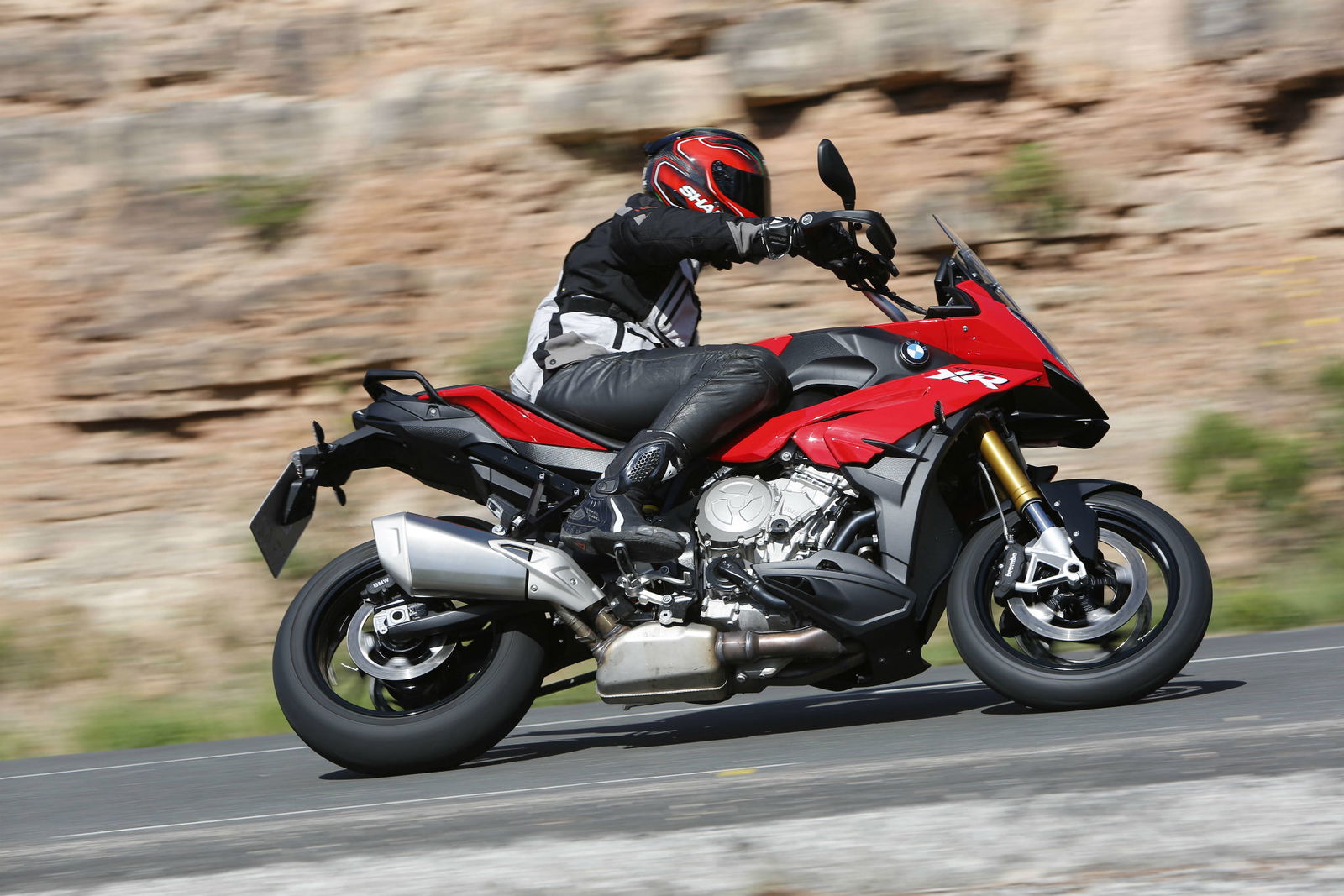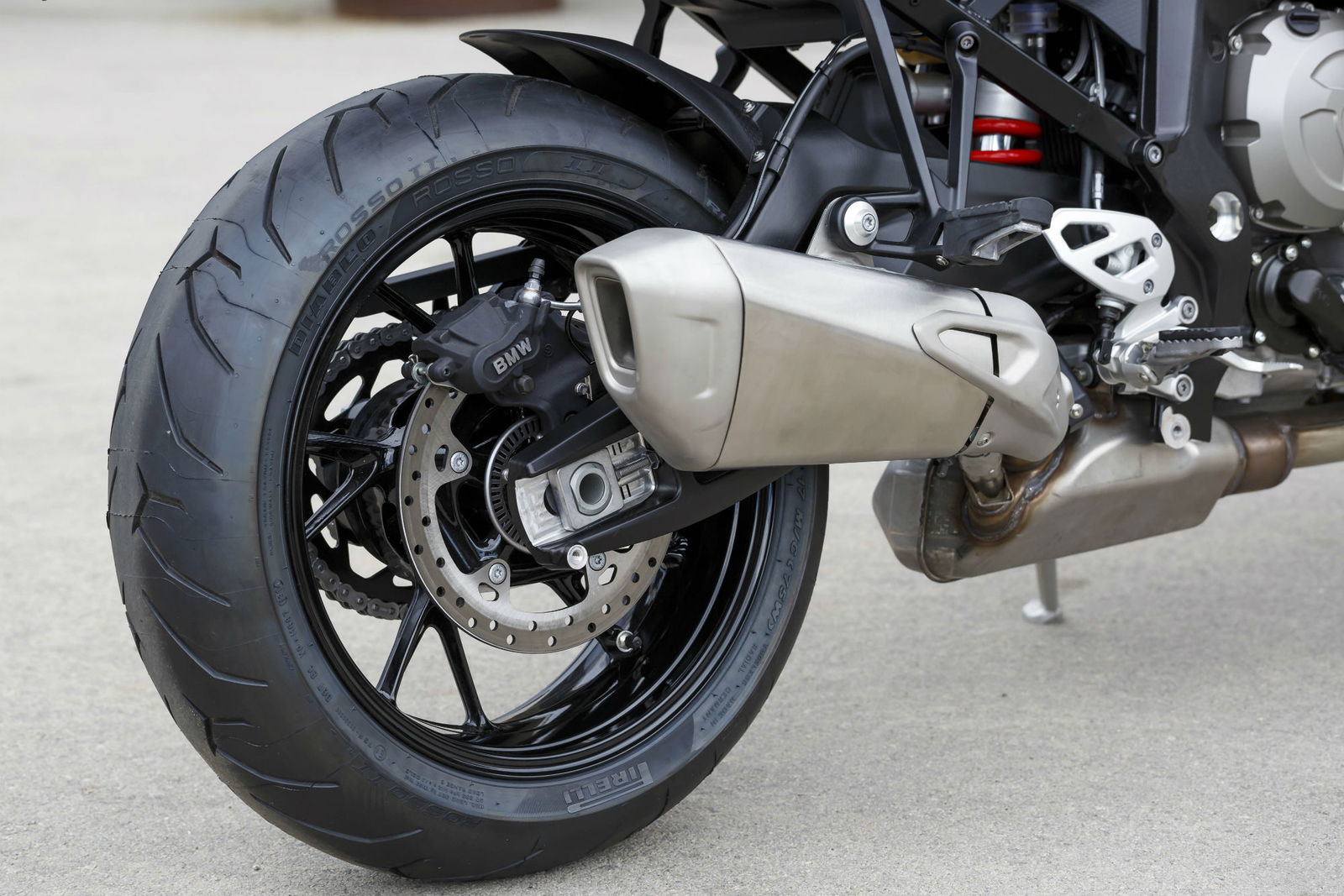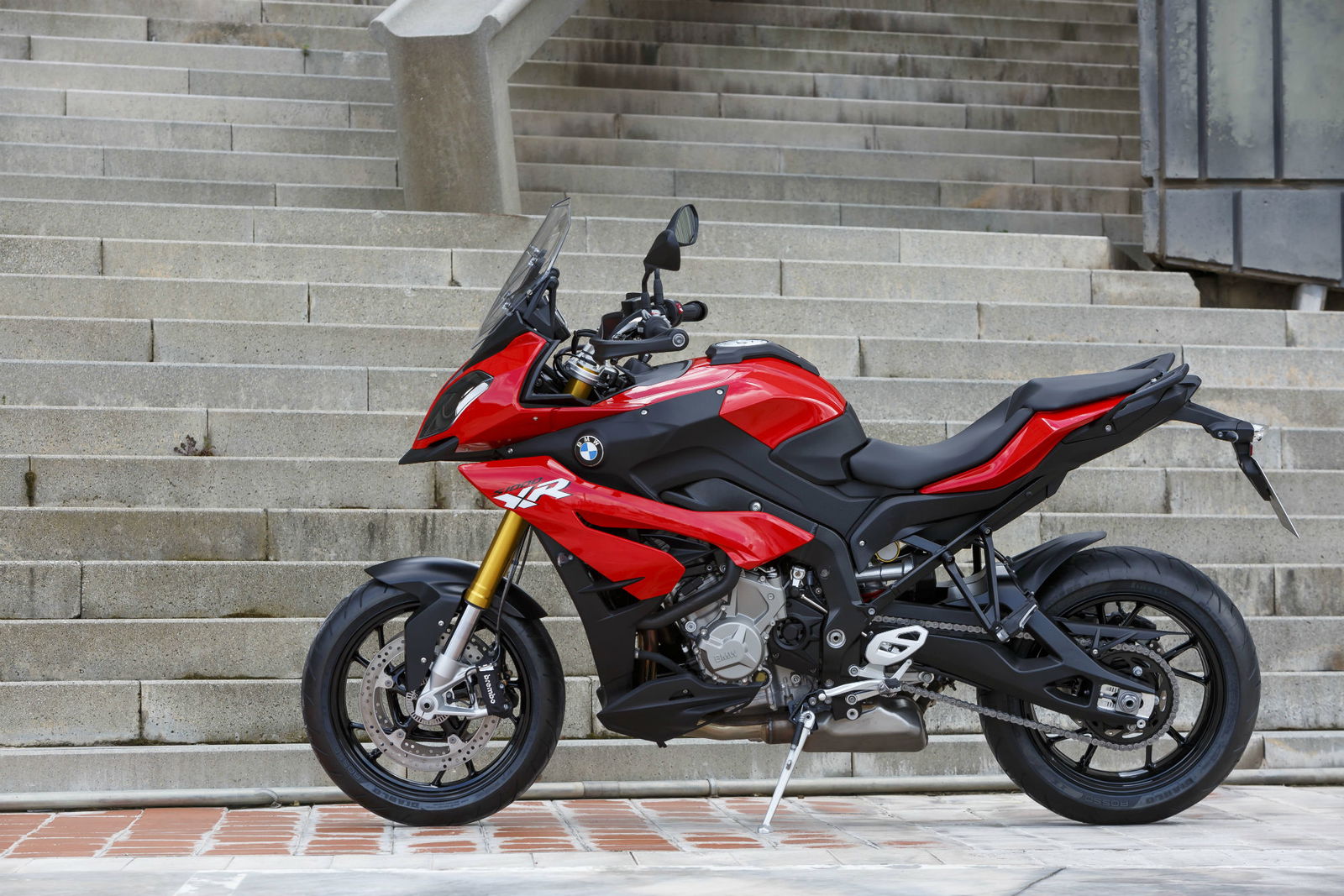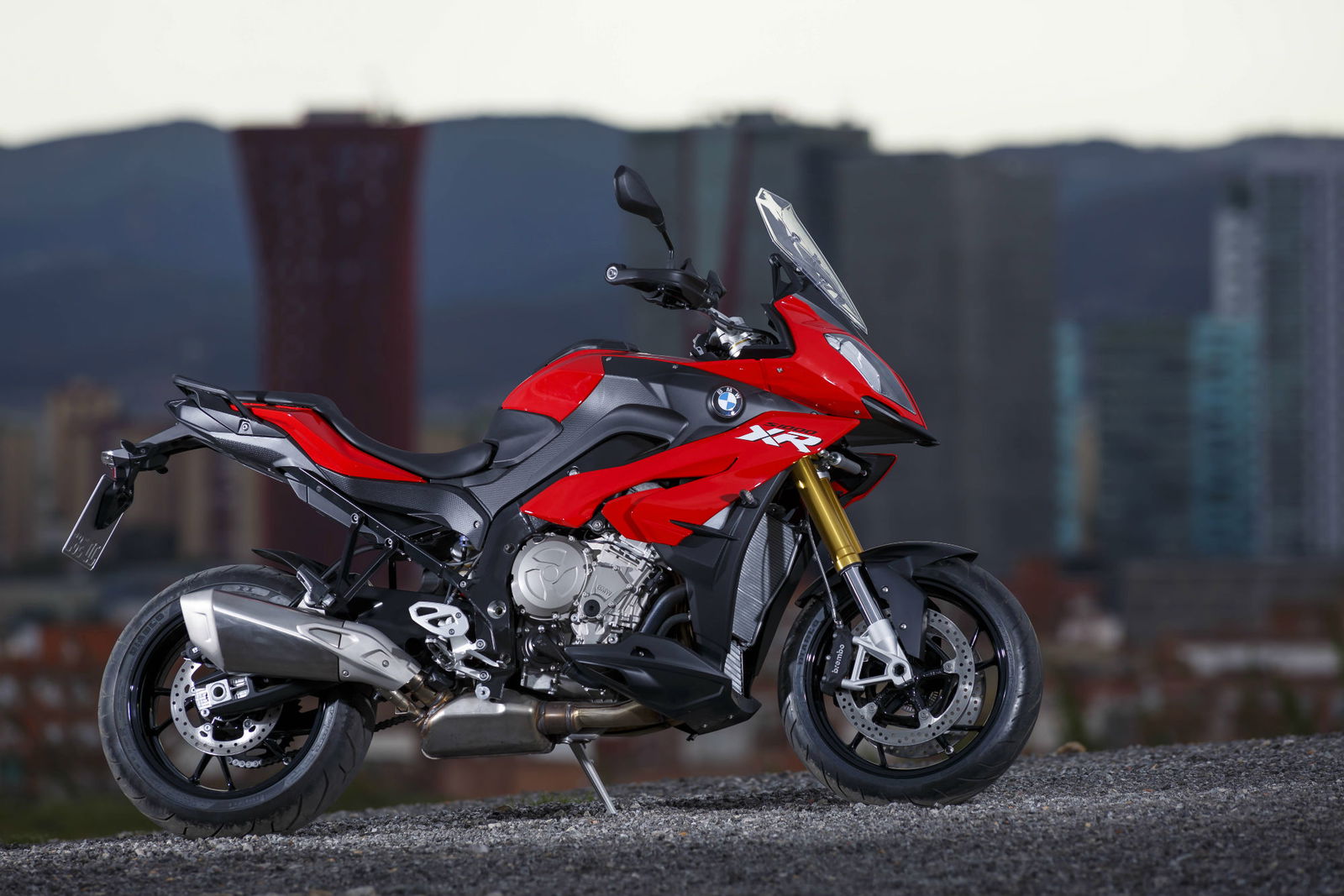First ride: BMW S1000XR review
Where S1000RR meets Multistrada 1200


By Roland Brown
FIVE years ago motorcycle performance was dramatically stretched in two directions, with the launch of BMW’s S1000RR and Ducati’s very different but equally spectacular Multistrada 1200. Someone must have parked those iron horses together. How else do you explain the birth of the S1000XR, whose mother is undoubtedly BMW but whose beaky, long-legged look and sporty adventure-bike DNA are straight from the Multi?
In reality of course the XR is the result of BMW, who have already successfully extended their S1000 family into the super-naked world with last year’s S1000R, going a step further to compete with Ducati in the adventure-sport market sector that the Italian V-twin basically created. The XR uses the same 999cc, four-cylinder engine as the S1000R, held in a new aluminium-framed chassis whose adjustable screen, upright riding position and luggage-carrying ability are more reminiscent of the R1200GS.
That 16-valve, liquid-cooled power plant, essentially a de-tuned S1000RR unit, is identical to the S1000R engine, though it gets fresh mapping plus a new exhaust system. The output is unchanged, which means there’s a healthy torque spread and a maximum of 160hp at 11,000rpm. Even the gearing stays the same but the XR gets the option of a new quick-shifter which, unlike the S1000R unit, works on both up- and down-changes.
Chassis layout follows the S1000R by combining an aluminium beam frame with telescopic forks and a rear monoshock, but the XR parts are all new. The frame gives more relaxed steering geometry, there’s a generous 150mm of travel up front and 140mm at the rear, and a longer aluminium swing-arm helps stretch the wheelbase by 9mm to 1548mm. The non-adjustable dual-seat is broad, and at 840mm high enough that unless you’re tall you might consider the 20mm lower option. (There’s also a kit that drops it to 790mm, for £175.)
So far, so much like an adventure bike, then. As you reach out to grip the wide, slightly raised one-piece bar, and look out past a fairly slim but quite tall screen, the new four has a GS-like feel that can only be deliberate. But by the time you’ve accelerated away, shifted through the box and sliced this distinctly rapid and improbably quick-steering bike through a set of bends, it’s clear that if this is an adventure sport bike then sport is the dominant part.
It even has Sport in its name, at least for the majority of UK buyers. Alongside the basic model is an S1000XR Sport that adds more refined DTC traction control, extra riding modes, cruise control, heated grips and more; and a top-spec Sport SE that includes Dynamic ESA semi-active suspension plus touring-friendly options including centre-stand, luggage rack and pannier fastenings. All fair enough, though even if they’d called the basic model the Sport I don’t think anyone riding it would feel short-changed.
The engine is a major reason for that. As you’d expect, it’s every bit as good as it is in the S1000R: powerful and revvy enough to give exhilarating, shoulder-wrenching acceleration every time you tweak the throttle. It’s also immaculately fuelled, extremely smooth – with just a slight four-cylinder tingle up near the 11,000rpm red line – and flexible enough to make the XR easy and even relaxing to ride.
Well, maybe not quite relaxing; it’s too temptingly quick for that – happy to howl to an indicated 130mph in seconds, with plenty more to come to a top speed of about 170mph. But there’s fantastic midrange punch from 7,000rpm until the adjustable shift light starts flashing. And while the four doesn’t have quite the low-rev heft of some engines, it pulls very cleanly from well below 4,000rpm in the lower gears, and is equally rider-friendly whether you’re trickling through town or gassing it out of a hairpin in the country.
The XR is particularly addictive if it’s fitted with the Gear Shift Assist Pro, a £385 option that is included with the Sport and SE models. The shifter works flawlessly both up and down the box, allowing rapid changes on the way up, and even more enjoyable and effortless down-shifts that are accompanied by a blip of the pleasingly throaty exhaust.
On the launch near Barcelona that all added to the XR’s pace and sporty feel, and so did its chassis performance. Never mind those long legs, for me the big surprise was how sporty and agile the bike felt, despite that generous suspension travel. BMW are happy to admit that they designed it to be on the sporty side for an adventure styled bike, and that showed.
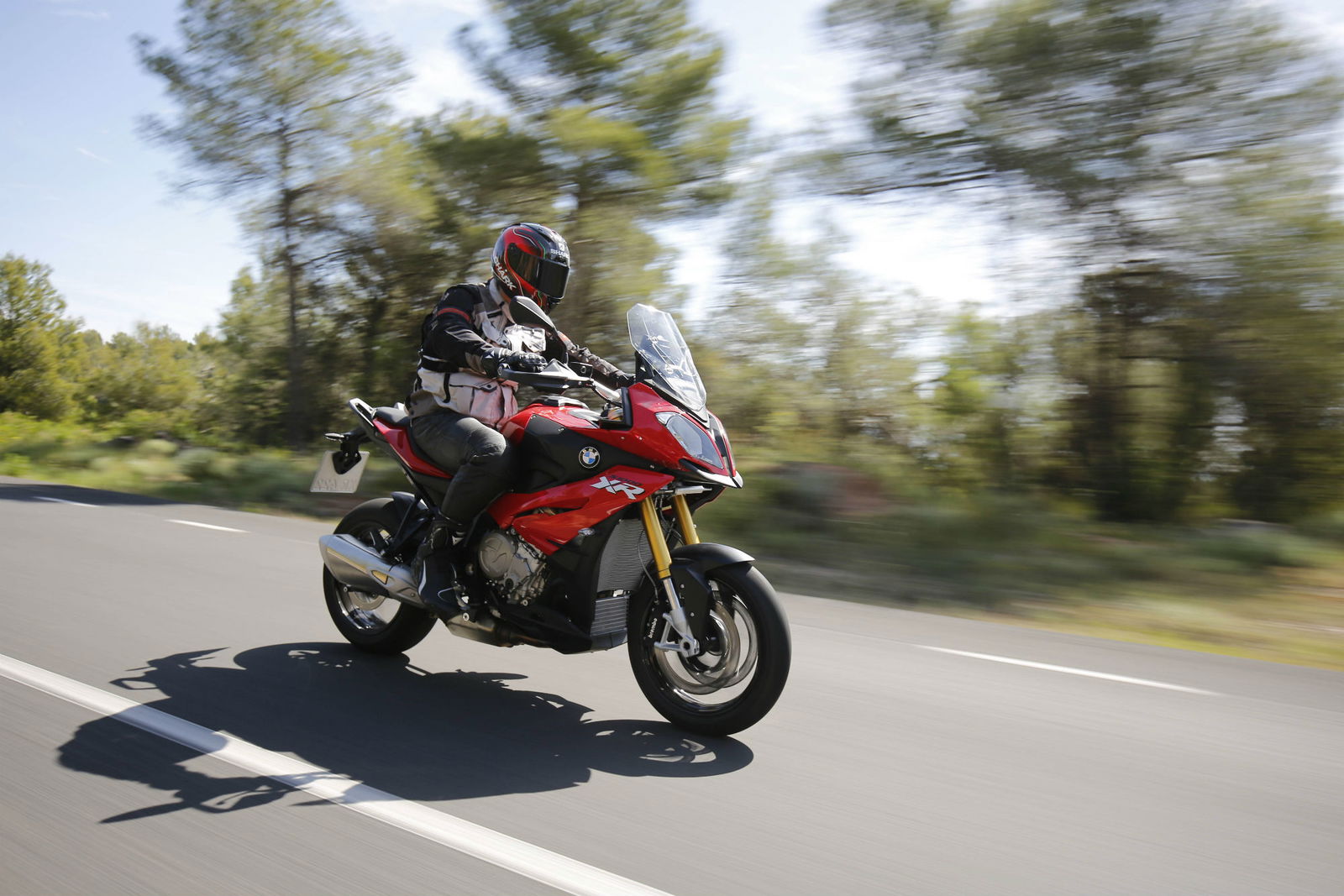
At 228kg fully fuelled the XR is respectably light: 21kg heavier than the S1000R but 10kg lighter than the R1200GS. Although its steering geometry isn’t quite as steep as the S1000R’s, that wide handlebar gave enough leverage to make the bike fantastically easy to flick through the endless hairpins on the road that wound from Sabadell to Manresa.
The launch bikes were essentially Sport models also fitted with the Dynamic ESA semi-active option (most markets don’t get separate models), which basically has two settings, Road and a firmer Dynamic. Even in Road mode the bike felt quite firm by adventure standards, and on bumpier surfaces it didn’t deliver quite the plush ride that some riders might expect. In fact, as with the R1200R and RS boxers, I felt the bike would have benefitted from a more noticeable difference between the two modes.
Dynamic mode was just about perfect for more aggressive riding, though. It not only gave a very acceptable balance between comfort and control, but also subtly raised the rear of the bike, which sharpened the steering feel to good effect. In Dynamic the XR could be flicked through tight bends almost like a sports bike, benefitting from its sticky Pirelli Diablo Rosso II rubber and heaps of ground clearance.
Braking was also excellent. As standard the XR comes with 320mm discs and powerful, ABS-equipped Brembo four-pot calipers, to which the Sport and SE add BMW’s own cornering ABS system, ABS Pro. Like Bosch’s system it’s linked to the lean-angle sensor, and should add an extra level of safety, although I didn’t find the courage to grab the lever in mid-turn and test it fully.
Inevitably the BMW won’t be quite as good at the touring aspect of an adventure bike (and it’s definitely not designed to go off-road), but it should keep most riders happy. The screen is quite narrow but diverted the wind from my chest, if not my shoulders, quite efficiently. Like the R1200RS screen it’s very easily adjustable by 60mm simply by pulling it up or down, which can be done at slow speed. Being tall I still got some turbulence even in the higher position but the ride was less noisy than with many adventure bikes.
The big broad seat also seemed comfortable on a launch ride of about 175 miles, and also has plenty of pillion room plus large grab-handles. Range was acceptable but not great, with enthusiastic throttle use bringing consumption down to 35mpg, making the 20-litre tank good for about 150 miles. At least the instrument panel shows consumption and range, alongside the digital speedo and analogue tacho. There’s an electrical socket in the cockpit, but no storage space. Plenty of riders will doubtless make up for that with the panniers and top-box that are among the many accessories.
One thing the XR understandably can’t do is compete directly on price with its simpler S1000R sibling (which still costs just over £10,000 in basic form). The standard XR costs £12,400 and the Sport and Sport SE are £13,645 and £14,750 respectively. That looks good value for seriously exciting yet versatile and well-equipped bike that works out slightly cheaper than an equivalent R1200GS. For four-cylinder sports bike riders who are tempted to try an adventure bike, the XR might just be the ideal solution.
Model tested: 2015 BMW S1000XR Sport
Price: S1000XR Sport £13,645 (standard XR £12,400, Sport SE £14,750). Bike tested also had £775 Dynamic ESA, £180 Preparation for GPS; total £14,580.
Power: 160hp
Torque: 83lb.ft
Wet weight: 228kg (full tank)
Tank capacity: 20 litres
Seat height: 840mm
Available: June 20th

